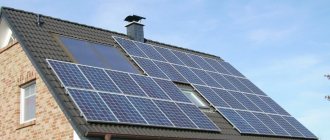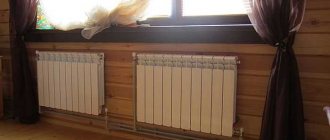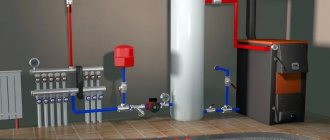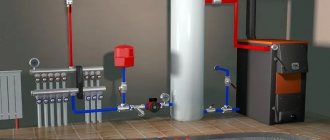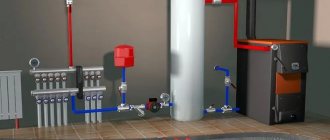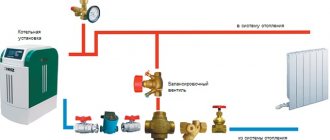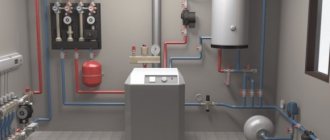Probably everyone has heard about solar energy and the benefits it brings. Renewable sources of electricity have been actively discussed for at least the last 10 years, and after the adoption of the feed-in tariff law in December 2019, this topic became a trend in Russia. And profitable. At least for companies that install solar panels on the roof of a house. But the benefits for the owner of a home solar power plant (SPP) are not so obvious.
Typically, companies selling solar panels lure customers with autonomy, environmental friendliness, savings on electricity, and even earnings from selling it to the state. It cannot be said that they are deceiving. But, as is customary in advertising, they don’t tell the whole truth.
There are cases where installing solar panels on your roof is truly a great investment for the future. In every sense: from preserving nature to making money. But situations where there is not the slightest sense in installing a home solar power plant are also not uncommon. The trick is to learn to distinguish the first situation from the second. And to do this, you need to understand the principles of operation of solar panels, their types and the factors that affect the performance of batteries.
Choosing an installation location
The efficiency of solar panels depends on several factors, the main one of which is the location of the panels relative to the sun. Ideally, the rays should hit the surface perpendicularly, this will ensure maximum performance of the photovoltaic components. The installation of solar panels must meet the following requirements:
- choose an area with the greatest illumination
- there should be no tall buildings, trees or hills nearby that create shadows
The requirements are simple and understandable, however, in practice it can be difficult to achieve such a situation. The main reason for the difficulties that arise is the movement of the sun across the sky and the changing position of the source relative to the plane of the solar panels. Large solar systems use tracking units that automatically change the position of solar panels throughout the day, and also take into account seasonal changes. It is difficult for an ordinary homeowner to purchase such a complex, and there is nowhere to install it. Therefore, a certain middle position is chosen.
To select the optimal location of the panels, they are guided by the values of the angle of inclination and azimuth. The position of the sun above the horizon depends on the latitude of the region. Moreover, it changes throughout the year. It is easier to ensure the correct azimuth - the panels are oriented exactly to the south, which ensures the average angle of the sun to the plane during daylight hours.
Another barrier to optimal installation is site configuration and geographic location. Sometimes there is no space at all to install solar panels. All these considerations made the most convenient choice for placing the panels on the roof slopes.
This option has many advantages:
- openness to sunlight
- the impossibility of damaging the panels by vandals
- no obstacles to obtaining energy
However, there are also disadvantages:
- The location of the roof slopes rarely corresponds to the optimal direction for the panels
- clearing snow or dust is a complex and dangerous procedure
- a strong gust of wind can rip batteries off their mounts
The disadvantages are significant, but the lack of alternative options forces you to put up with them. However, installing solar panels on the roof is not the only option. Sometimes the wall of the house facing south is chosen as the installation location. This is convenient in regions with a lot of snow in winter, since frequent cleaning requires time and effort. The vertical arrangement of the panels prevents the formation of snowdrifts on the surface of the solar panels. In addition, the panels are cleaned from dust from the ground, which is safe and convenient for the owner.
If none of these methods are suitable for some reason, all that remains is to use special support structures - trusses. They are a structure made of metal pipes, firmly fixed to the earth's surface and supporting profiles for mounting panels. This option allows the solar panels to be more accurately aligned with the sun, but requires space and maintenance.
Examples of multi-storey buildings in cities with solar panels on the roof
Among the oldest examples, the option of installing a solar power plant right in the capital, on the roof of one of the Chertanovo high-rise buildings in 2016, is well known. In this typical Moscow high-rise building, the panels were installed by the municipal authorities themselves.
The result, even with the relatively low power and efficiency of the modules of that time, was a reduction in energy costs for lamps in the entrance and street lights by 150 times!
Today, many similar projects have been implemented in many cities of Russia, especially in the southern regions. Thus, in Krasnodar, 21 photovoltaic panels fully provide energy for 8 entrances of a 12-story building and 5 street LED lamps.
Installation methods
Installation of solar panels on the roof in private homes is done in two ways:
- an agreement is concluded with a specialized organization
- Do-it-yourself solar panel installation
Installation companies
The first option allows you to get professional and high-quality installation, but requires considerable expenses and time, since you will have to be at home while the work is being carried out. It must be borne in mind that the installation of solar panels on the roof in private homes, the price of which depends on the degree of complexity and other factors, can amount to a very significant amount.
This method is only suitable for people who have no idea about installation work or do not have the ability to perform them. In any case, you need to find out in advance how much it costs to install solar panels in a private home, which companies do it, and read reviews. This will avoid unpleasant consequences.
With your own hands
If you choose the option of installing solar panels for your home yourself, the price of the kit will decrease significantly. However, it will take time, some effort and tools. The installation procedure is always described in detail in the instructions for the kit; before installing solar panels for your home, you must carefully study it and follow the instructions exactly. It is necessary to take into account the thickness of the snow cover in winter, find out the frequency of strong winds and their predominant direction, and ensure the drainage of rainwater. All these issues have a significant impact on the performance and safety of the panels, so they cannot be neglected.
Installation stages
Let's look at how solar panels are installed and how to install the entire set of equipment in a private home. First of all, you need to study the instructions that come with the solar panels. Regardless of the type of supporting structure or installation location, each type of panel has its own requirements and nuances. They must be identified and taken into account during installation.
For example, it is necessary to use only standard mounting holes. You cannot drill the panels yourself - this will automatically cancel the warranty agreement.
Brackets
Before starting work, you must purchase a set of supporting profiles on which solar panels are installed, the price of which depends on the design and size. There are conventional brackets that provide a ventilation gap between the panels and the roof surface. There are more expensive designs with adjustable angles.
These profiles allow you to get the maximum effect from the use of solar panels, but create an increased wind load on the roof and rafter system. It is necessary to purchase profiles that correspond to the characteristics of the main roofing sheet. Mounting brackets are not included with the profiles and must be purchased separately.
Support structure
Installation of the supporting structure is carried out on the illuminated side of the roof. The dimensions and ratios are indicated in the instructions; for greater confidence, you can independently measure the distances between the mounting holes of the panels. If clamping clamps are used, the correct distance around the perimeter of the profiles must be ensured. It is necessary to ensure such a distance between the panels that it is convenient to clean, maintain and change them as necessary.
In addition, the batteries should not shade each other when changing position relative to the sun.
Direction
After installing the profiles, begin installing the panels. It is recommended to start work from the top row and gradually go down (if the number of solar panels requires it). This process is not fundamentally difficult, but working at height in itself requires accuracy and caution.
After the installation of solar panels on the roof, the price of which can be significantly reduced if you do it yourself, is completed, you begin to place the equipment and connect it to the panels. A special cable is led from the roof into a specially designated room where electricity storage and processing devices are located.
Advantages of solar panels in a multi-storey building
In addition to the obvious advantages of solar energy as such, installing a solar power plant in a city high-rise building gives residents the following advantages:
- use of a large roof area that does not perform any other useful functions;
- obtaining increased generation due to the significant height of the location, where the air in urban environments is cleaner (according to calculations - by approximately 5% for buildings with 9 floors and up to 20% for buildings with 24 floors);
- a significant, several orders of magnitude, reduction in the cost of lighting entrances and local areas.
Connection diagram
Consumers cannot be connected directly to solar modules. They produce direct current, the parameters of which do not meet the standards. Therefore, in addition to the panels, a whole range of equipment is used.
The solar panels are connected according to three schemes:
- sequentially
- parallel
- combined scheme
An abundance of options is needed so that the power of the modules can be selected to match the parameters of the consumption devices. The panels connected in one way are connected to the charge controller. This is a device that ensures timely charging of the battery and prevents violations of the operating mode. Devices operating on direct current can be connected to it.
The controller is connected to a battery pack that accumulates charge and releases it as needed. The batteries are connected to the inverter. This is a device that converts direct current from batteries into standard alternating voltage for household appliances.
Where to put the inverter?
The inverter and other devices included in the solar panel complex must be installed in a separate or common room with free access.
For batteries, it is necessary to make a special rack or stand to make servicing convenient. It is not always possible to allocate a separate room, but in any case, the most convenient conditions for placing the equipment should be created. If there are children in the house, it is advisable to fence the room, and ideally, have a lockable door.
Average installation prices
Many potential users are interested in how much it costs to install solar panels. This is far from an idle question, since self-assembly is not accessible to everyone. You must have skills, know the features of placing and mounting modules on the roof, and be able to connect and configure the complex. The work is complex, requiring experience and understanding of the meaning of all operations.
Any installation of solar panels on the roof of a house, the price of which depends on the number of modules and the composition of the system as a whole, must be carried out by trained people with appropriate permission and qualifications. Improper installation and connection of the kit can cause failure of household appliances and lighting, cause a fire or other undesirable consequences.
Typically, prices start from 5,000 rubles for installation and connection of one module.
However, before purchasing solar panels, you should obtain the most detailed information about specialized companies and their prices. This will allow you to conclude an agreement with the most competent and responsible people and obtain the highest quality installation of the complex.
Registration of permits
The process of obtaining all the necessary documents consists of several stages.
Stage No. 1. "Legalization" of the roof.
It is the most difficult because it requires the legal transfer of the roof into the ownership of the building's residents. To do this you need:
- obtain an opinion on the suitability of the roof for reconstruction in the form of installing solar equipment (in many old buildings this can be problematic);
- approve the transfer to the category of exploited at a meeting of owners - and the protocol must be signed by all apartment owners without exception;
- a multi-storey building in which solar panels will be installed on the roof can only be transferred to the required category by Rosreestr, where the decision will be approved;
- if one is received, a second meeting will need to be held - now the presence of 2/3 of the owners will be sufficient - where the purpose of using the roof should be recorded;
- the document must be sent to the Institute of Housing Design, where an engineering project will be created;
- the finished document must be approved by Construction Supervision, and then by municipal authorities.
Important! If there are violations in at least one of the listed points, the legalization may be declared invalid, and the station will be forced to be dismantled, and at the expense of the owners.
Stage No. 2. Obtaining specifications for connecting solar panels in a multi-storey building to the power grid
Any solar power plant, according to current legislation, is recognized as a “non-standard electrical installation”. To obtain a permit, owners will need:
- submit an application for connection to networks to the relevant department of the REM;
- a second application for the allocation of additional electrical power to the building;
- all documentation approved at the first stage.
Since there is only one licensing organization, approval usually occurs without problems.

